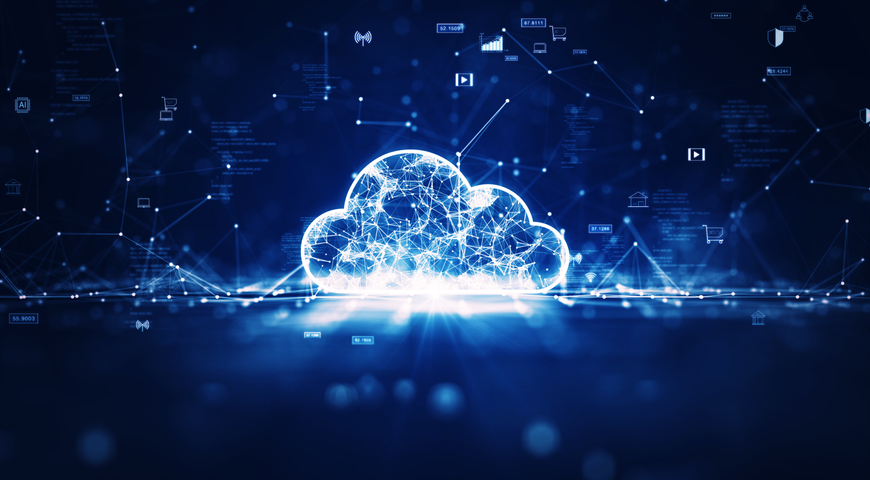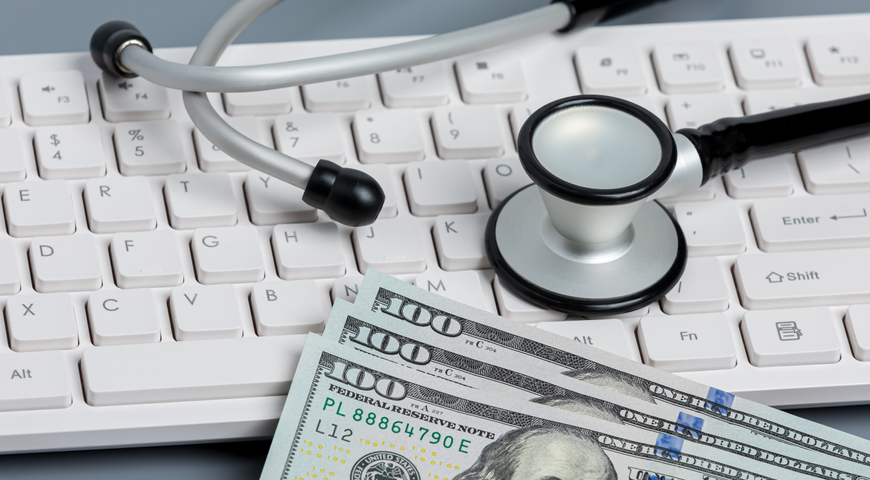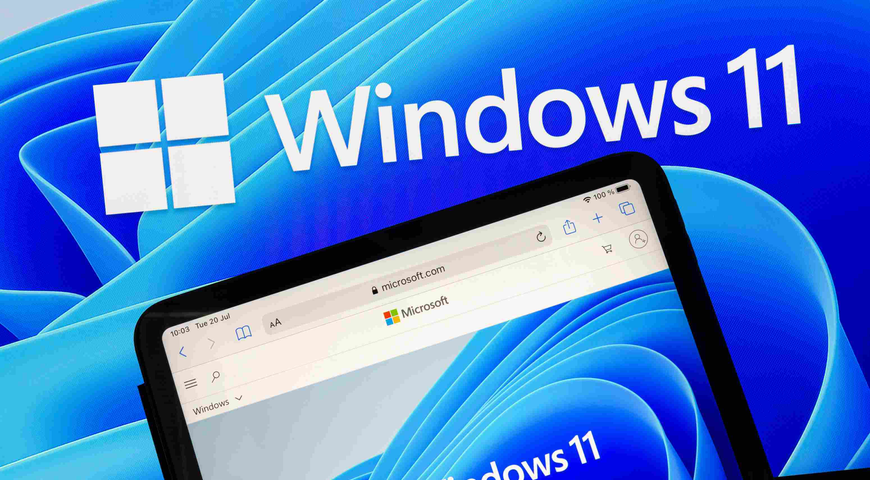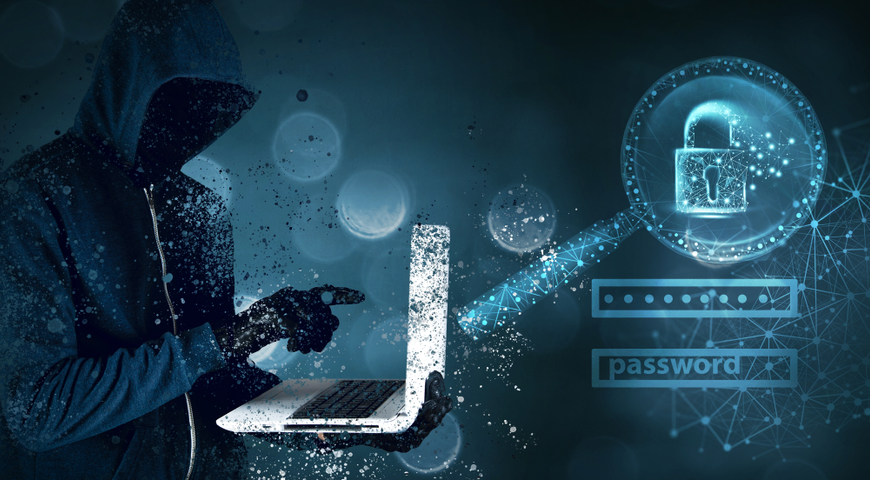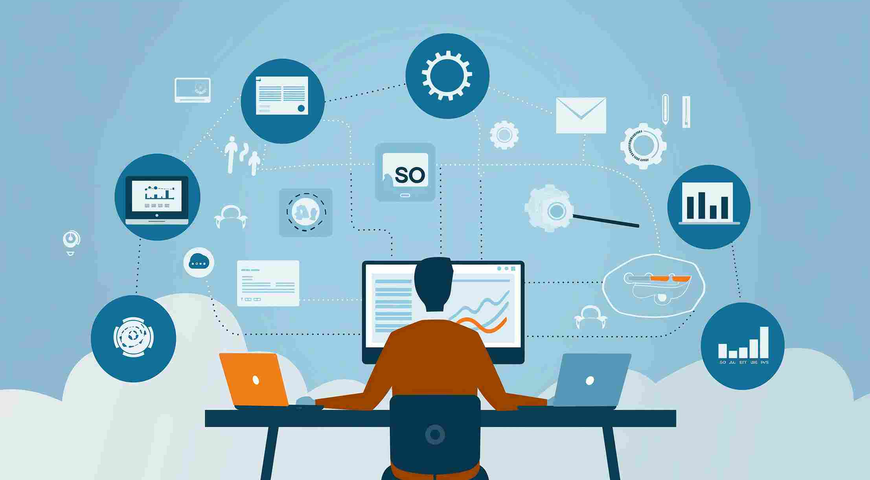
Remote access solutions offer unparalleled flexibility and connectivity, streamlining workflows and fostering collaboration across geographies. In this article, we explore the transformative potential of remote access solutions, and how they empower businesses to thrive in the dynamic realm of e-commerce and digital entrepreneurship.
What this article will cover:
● Understanding remote access solutions.
● How does remote access software work?
● What is a good remote access software?
● The role of remote management devices.
● Remote access management solutions for MSPs.
● Ensuring secure remote access.
● Choosing the best remote access solution.
● The importance of a comprehensive remote access tool.
● Future trends in remote access solutions.
What is remote access software?
Because remote access solutions empower employees to work from anywhere with an internet connection, they contribute to increased productivity, reduced overhead costs and improved work–life balance for employees. Moreover, in the face of unforeseen disruptions such as natural disasters or public health emergencies, remote access solutions help ensure business continuity and resilience.
The role of remote access
Whether for technical support, collaborative work or personal convenience, remote access technology plays a vital role in facilitating remote interactions with computing devices. Here's how computer remote access software functions and its significance in various contexts:
● Technical support: IT professionals use remote access software to diagnose and troubleshoot technical issues on users' computers without needing to be physically present. This saves time and resources while allowing for prompt resolution of technical problems.
● Remote work: In an increasingly remote work environment, computer remote access software enables employees to access their work computers from home or other off-site locations. This flexibility promotes productivity and work–life balance by eliminating the need for constant commuting or relocation.
● Collaboration: Teams working on projects across different locations can use remote access software to share files, collaborate on documents and access shared resources in real time. This fosters seamless communication and collaboration, regardless of geographical barriers.
● Personal use: Individuals may use computer remote access software for personal purposes, such as accessing files or applications stored on their home computer while traveling or managing their systems remotely for convenience.
Types of remote access solutions
The market offers a diverse range of remote access tools tailored to meet the specific needs and preferences of different users and organizations. These solutions can be broadly categorized into several types, each offering unique features and functionalities:
● Remote desktop software
This type of software allows users to access and control a remote computer's desktop environment as if they were sitting in front of it. Examples include TeamViewer, AnyDesk and Microsoft Remote Desktop.
● Virtual Private Network (VPN)
VPNs establish a secure connection over the internet, encrypting data transmitted between the user's device and the network. They are commonly used to access corporate networks securely from remote locations.
● Cloud-based remote access services
These services provide remote access to files, applications, and resources stored in the cloud. Examples include Google Workspace (formerly G Suite), Microsoft Office 365 and Dropbox Business.
● Remote support tools
Designed primarily for IT professionals, remote support tools allow technicians to troubleshoot and resolve issues on remote computers or devices. Popular examples include LogMeIn Rescue, Splashtop SOS and ConnectWise Control.
By evaluating the features, security measures, and compatibility of different remote access solutions, businesses can select the option that best aligns with their operational needs and objectives.
How does remote access software work?
Remote access software operates by establishing a connection between two computers, known as the "host" (the computer being accessed remotely) and the "client" (the computer accessing the host). This connection is typically facilitated over the internet, allowing users to remotely control the host computer from a different location. Here's a breakdown of how remote access software works:
- Installation and setup: Both the host and client computers need to have compatible remote access software installed. The host computer usually requires a server component, while the client computer needs a client application or web interface to initiate the connection.
- Authentication and security: Before establishing a connection, users must authenticate themselves through usernames, passwords or other security measures. Additionally, many remote access software solutions employ encryption protocols to secure data transmission between the host and client computers, protecting sensitive information from unauthorized access.
- Connection establishment: Once authenticated, the client computer initiates a connection request to the host computer. This request is typically routed through the internet, although some remote access software may use local networks or virtual private networks (VPNs).
- Remote control: Upon successful connection, the client gains access to the host computer's desktop environment or specific applications, depending on the configuration and permissions granted by the host. The client can then control the host computer's mouse, keyboard and other input device to mirror their actions on the remote system.
- Data transmission: Any actions performed by the client, such as opening files, running programs or modifying settings, are executed on the host computer in real-time. Likewise, the host computer sends back visual and auditory feedback to the client, allowing users to interact with the remote system as if they were physically present.
What is a good remote access software tool?
When selecting secure remote access software, several key characteristics contribute to its effectiveness and suitability for various use cases:
● Ease of use: Good remote access software should have an intuitive user interface and straightforward setup process, minimizing the learning curve for both administrators and end-users. Intuitive controls and navigation enhance user experience, allowing for seamless remote connections and interactions.
● Security features: The software should employ robust encryption protocols to safeguard data transmission and authentication mechanisms to prevent unauthorized access. Additional security features such as multi-factor authentication, session recording, and granular access controls further enhance protection.
● Scalability: As organizational needs evolve, remote access software should be capable of scaling to accommodate growing user bases and expanding infrastructures. Scalability ensures that the software remains viable in environments ranging from small businesses to large enterprises, without compromising performance or reliability.
The role of remote management devices
Remote management devices, also known as remote management hardware or appliances, are specialized devices designed to facilitate remote access and control of IT infrastructure components such as servers, switches, routers, and storage systems. These devices typically feature built-in management interfaces and protocols that enable administrators to remotely perform various tasks without physical proximity to the equipment.
In today's distributed and interconnected IT environments, remote management devices empower IT teams to respond swiftly to issues, deploy updates and patches, and optimize configurations without the need for on-site visits.
Remote management devices can also enhance productivity by reducing the time and resources required for routine maintenance, troubleshooting and configuration tasks. Administrators can remotely diagnose and resolve issues, perform scheduled maintenance activities and implement changes or updates from a centralized console, regardless of their physical location. This streamlined approach allows IT teams to focus on strategic initiatives rather than routine maintenance tasks.
Remote access management solutions for MSPs
Computer remote access device management solutions are essential tools for MSPs tasked with overseeing and maintaining the IT infrastructure of multiple clients. These solutions enable MSPs to remotely control and monitor various devices, including servers, workstations, networking equipment and IoT devices, from a centralized management console. Key functionalities of remote access device management solutions for MSPs include:
Remote control
MSPs can remotely access and control client devices to perform troubleshooting, configuration changes, software installations, and maintenance tasks without the need for physical presence.
Monitoring and alerts
These solutions provide real-time monitoring of device health, performance metrics and security status. MSPs can set up alerts and notifications to proactively identify and address issues before they escalate, ensuring optimal uptime and reliability.
Patch management
Remote access device management solutions facilitate centralized patch management, allowing MSPs to deploy software updates, security patches, and firmware upgrades across multiple client devices efficiently and securely.
Security management
MSPs can implement security policies, enforce compliance standards and deploy security measures remotely to protect client devices from cyberthreats.
Asset inventory and reporting
These solutions maintain comprehensive inventories of client devices, software applications, licenses and configurations. MSPs can generate reports on asset utilization, performance trends, compliance status and service-level agreements (SLAs) to support decision making and client communication.
What about the Acronis remote access management solution?
Acronis offers a comprehensive remote access device management solution tailored for MSPs, known as Acronis Cyber Protect Cloud. This platform integrates advanced cybersecurity, backup and endpoint management capabilities into a unified solution, empowering MSPs to deliver proactive protection and efficient management across their clients' IT environments. Key features of Acronis Cyber Protect Cloud include:
● Unified dashboard
Acronis Cyber Protect Cloud provides a centralized dashboard that offers visibility into all managed devices, including endpoints, servers and mobile devices, across multiple client environments. This dashboard enables MSPs to monitor device status, performance metrics, security alerts and backup status from a single interface.
● Remote monitoring and management (RMM)
Robust remote monitoring and management capabilities allow MSPs to monitor device health, performance and security in real time. MSPs can remotely access client devices to perform maintenance tasks, deploy software updates and address security issues without disrupting end-users.
● Integrated backup and recovery
Acronis Cyber Protect Cloud offers flexible backup options, including full image backups, file-level backups, and application-aware backups, with granular recovery capabilities to minimize downtime and data loss.
● Advanced cybersecurity features
Advanced cybersecurity features such as next-generation antivirus (NGAV), anti-malware, anti-ransomware and behavioral analysis serve to detect and mitigate cyberthreats in real time. The solution also includes proactive vulnerability assessment and patch management capabilities to help MSPs safeguard client devices against emerging security risks.
● Comprehensive reporting and compliance
Acronis Cyber Protect Cloud generates detailed reports on device inventory, backup status, security events and compliance posture to support auditing and reporting requirements.
Ensuring secure remote access
Secure remote access solutions are essential for organizations to protect sensitive data and mitigate cybersecurity risks across interconnected and remote work environments. Here's why they are crucial:
- Protection of sensitive data: Without proper security measures in place, sensitive information transmitted over remote connections can be intercepted or compromised by unauthorized individuals, leading to data breaches, financial losses and reputational damage.
- Prevention of unauthorized access: By verifying the identity of remote users and enforcing granular permissions, organizations can limit access to sensitive data and systems only to authorized personnel, reducing the risk of unauthorized data exposure or misuse.
- Mitigation of insider threats: Secure remote access solutions enable organizations to monitor and audit remote user activities, detect suspicious behavior and enforce security policies to prevent insider threats from compromising sensitive data or systems.
- Compliance with regulations: By adopting secure remote access practices, organizations can demonstrate due diligence in protecting data privacy and meeting regulatory obligations, avoiding costly fines and penalties for noncompliance.
- Business continuity and resilience: Secure remote access solutions play a vital role in ensuring business continuity and resilience, especially during unforeseen disruptions such as natural disasters, pandemics or other emergencies that force employees to work remotely.
Six best practices for implementing secure remote access
Implementing secure remote access involves adopting a multilayered approach that combines technological solutions, security policies, and user awareness. The following are a few best practices to enhance the security of remote access:
- Use strong encryption protocols (e.g., SSL / TLS) to secure data transmitted over remote connections, ensuring confidentiality and integrity. Implement end-to-end encryption for sensitive communications and data transfers to protect against eavesdropping and interception.
- Require users to authenticate using multiple factors (e.g., passwords, biometrics, security tokens) before granting access to remote resources. Multifactor authentication (MFA) adds an extra layer of security beyond passwords, reducing the risk of unauthorized access due to stolen or compromised credentials.
- Implement granular access controls based on the principle of least privilege, granting users access only to the resources and privileges necessary to perform their job duties. Use role-based access control (RBAC) to define and enforce access policies based on user roles, responsibilities and organizational hierarchy.
- Segment the corporate network to isolate sensitive systems and data from external threats, including remote access connections. Use firewalls, virtual private networks (VPNs) and network access control (NAC) solutions to restrict access to authorized users and devices, minimizing the attack surface and containing potential breaches.
- Monitor remote access activities in real time and conduct regular audits to detect and investigate suspicious behavior, unauthorized access attempts or policy violations. Implement logging and auditing mechanisms to track user activities, access privileges and system changes, enabling timely detection and response to security incidents.
- Educate remote users about cybersecurity best practices, including the risks associated with remote access, phishing attacks and social engineering tactics. Provide training on how to recognize and report security threats, use secure authentication methods, and adhere to security policies when accessing corporate resources remotely.
How to choose the best remote access solution?
Selecting the best remote access software is crucial for ensuring seamless connectivity, security, and productivity for remote workers and IT professionals. Here are key factors to consider when evaluating remote access software solutions:
● Compatibility: Ensure that the remote access software is compatible with the operating systems and devices used within your organization, including desktop computers, laptops, tablets and mobile devices.
● Security features: Prioritize security when selecting remote access software. Look for features such as strong encryption protocols (e.g., SSL/TLS), MFA, granular access controls, session recording and intrusion detection / prevention capabilities.
● Performance and reliability: Choose a solution that offers low latency, high bandwidth and reliable connectivity to ensure smooth and uninterrupted remote access experiences for users, even in bandwidth-constrained environments or during peak usage periods.
● Scalability: Ensure that the solution can scale seamlessly to support growing user bases, increasing workloads, and expanding infrastructure requirements without compromising performance or usability.
● User experience: Evaluate the user experience provided by the remote access software, including ease of use, intuitiveness of the interface and availability of features such as file transfer, remote printing and collaborative tools.
● Support and maintenance: Choose a vendor that provides timely and responsive support services, regular software updates and proactive maintenance to address issues and vulnerabilities promptly.
Acronis advantages
Acronis offers several advantages over other remote access software solutions available in the market, including:
1. Integrated security and backup
Acronis Cyber Protect Cloud combines top-rated remote access capabilities with advanced cybersecurity features and data protection solutions, including backup and disaster recovery. This integrated approach ensures comprehensive protection for remote devices and data.
2. Unified management console
Acronis provides a centralized management console that allows administrators to monitor and manage remote devices, cybersecurity settings and backup policies from a single interface. This unified console simplifies administration across distributed environments.
3. AI-powered threat detection
By incorporating artificial intelligence (AI) and machine learning (ML) algorithms, the solution analyzes behavioral patterns, identifies suspicious activities, and automatically mitigates security risks to reduce the likelihood of data breaches and cyberattacks.
4. Flexible deployment options
Acronis offers flexible deployment options — including cloud-based, on-premises and hybrid deployments — to accommodate diverse organizational preferences and requirements. Regardless of your chosen deployment, Acronis Cyber Protect Cloud provides scalable and customizable solutions tailored to the unique needs of your organization.
5. Comprehensive support services
Acronis provides comprehensive support services, including 24/7 technical support, online documentation, training resources and community forums.
The importance of a comprehensive remote access tool
Remote access has become a fundamental requirement for businesses to offer flexible work arrangements, enhance productivity and hedge against business downtime. A comprehensive remote access solution that includes both software and hardware components is essential for addressing the diverse needs and challenges of modern organizations. Here's why:
1. Flexibility and mobility
A comprehensive remote access solution allows employees to securely access corporate resources, applications and data from anywhere, at any time — and using a variety of devices. This flexibility enables remote work, travel and hassle-free collaboration.
2. Enhanced productivity
By providing seamless access to tools and resources, a highly rated remote access solution eliminates barriers to productivity and allows employees to work efficiently from home or while traveling.
3. Business continuity and resilience
In the face of natural disasters, pandemics or other disruptions, a comprehensive remote access solution ensures that business operations can continue. Employees can access critical systems and data remotely, enabling organizations to maintain essential functions and services even during challenging circumstances.
4. Cost savings
Thanks to decentralizing the workforce, remote access solutions can help businesses reduce overhead costs associated with office space, commuting and infrastructure maintenance.
5. Scalability and growth
Whether adding new users, deploying remote offices, or integrating acquisitions, organizations can easily scale their remote access infrastructure to support evolving requirements and objectives.
What are the benefits of implementing a remote access solution?
1. Increased efficiency
Remote access solutions streamline workflows, reduce downtime and break down geographical barriers, resulting in increased operational efficiency and responsiveness.
2. Improved collaboration
By enabling remote teams to communicate, collaborate and share resources in real time, remote access solutions foster teamwork and innovation across distributed environments.
3. Enhanced security
Comprehensive remote access solutions incorporate robust security measures such as encryption, authentication, access controls and threat detection to protect sensitive data and mitigate cybersecurity risks.
4. Better work–life balance
Remote access solutions empower employees to achieve a better work-life balance by offering flexibility in work hours, location and scheduling, leading to higher job satisfaction and employee retention.
5. Competitive advantage
Organizations that embrace remote access solutions gain a competitive edge by attracting top talent, adapting to changing market dynamics and capitalizing on opportunities for innovation and growth.
Future trends in remote access solutions
As technology continues to evolve, several emerging trends are shaping the future of remote access, offering new capabilities, enhancing security and improving user experiences. Here are some key trends to watch out for:
Integration of AI and machine learning for predictive management
AI and machine learning technologies are revolutionizing remote access management by enabling predictive analytics, automated decision making and proactive problem solving. In the future, remote access solutions will leverage AI and machine learning algorithms to analyze the IT environment in real time. By predicting potential issues before they occur, organizations can optimize remote access performance, mitigate risks and enhance user satisfaction.
Advancements in biometric authentication for remote authentication
Biometric authentication methods — think fingerprint scanning, facial recognition and iris scanning — are becoming increasingly prevalent for remote authentication due to their enhanced security and user convenience. In the future, advancements in biometric technology will further improve accuracy, reliability and scalability. Biometric authentication could replace traditional passwords and provide organizations with a robust and user-friendly authentication mechanism for remote access.
Adoption of zero trust security models for remote access
Zero trust security models, which assume that no user or device can be trusted by default, are gaining traction as organizations seek to strengthen their security posture. In the future, zero trust principles will likely be applied to remote access, requiring continuous verification, strict access controls and granular least-privilege permissions for all remote users and devices.
Impact of 5G technology on remote access speeds and reliability
The deployment of 5G technology promises to revolutionize remote access by delivering faster speeds, lower latency and greater reliability compared to existing wireless technologies. In the future, 5G networks will enable seamless and high-performance remote access experiences for users, regardless of their location or device.
Summing it up
Remote access software stands as an indispensable tool for modern businesses, facilitating flexibility, productivity and resilience. The importance of remote access solutions cannot be overstated, as they enable organizations to overcome geographical barriers, enhance collaboration, and ensure business continuity in the face of the unknown.
By embracing best practices such as encryption, multifactor authentication and access controls, businesses can maximize the benefits of remote access while mitigating cybersecurity risks. It is crucial for businesses to adopt and prioritize remote access solutions in their operations, not only to remain competitive but also to adapt to evolving work trends and customer expectations.
As businesses navigate this journey, Acronis stands ready to support their needs with its comprehensive remote access solution, Acronis Cyber Protect Cloud. With its integrated security, backup and endpoint management capabilities, Acronis positions businesses to achieve seamless remote access experiences so they can thrive in an increasingly remote and interconnected landscape.
About Acronis
A Swiss company founded in Singapore in 2003, Acronis has 15 offices worldwide and employees in 50+ countries. Acronis Cyber Protect Cloud is available in 26 languages in 150 countries and is used by over 21,000 service providers to protect over 750,000 businesses.
